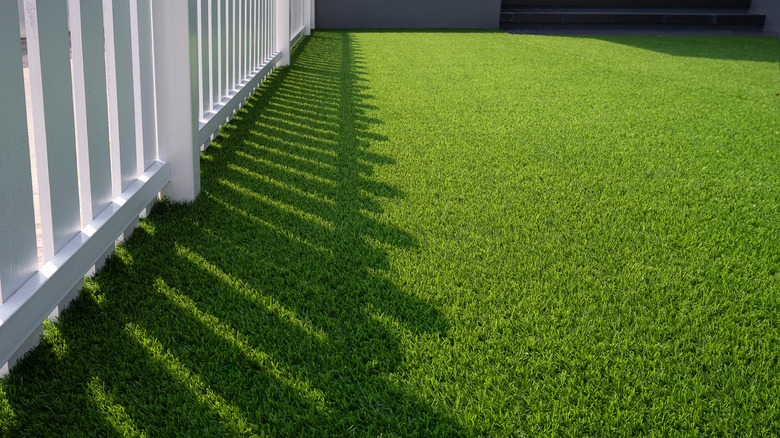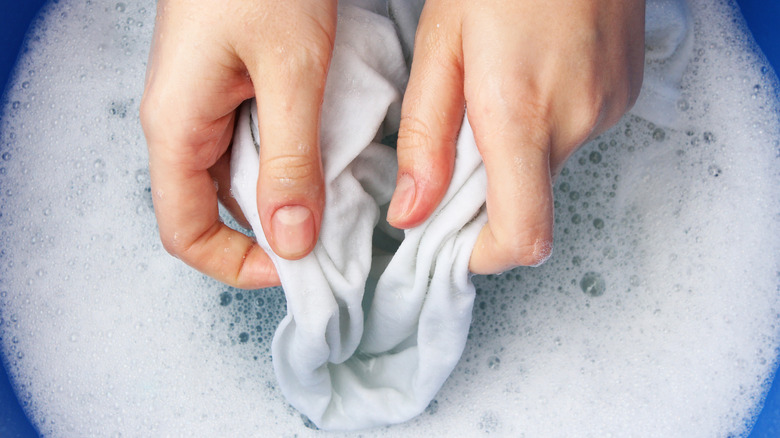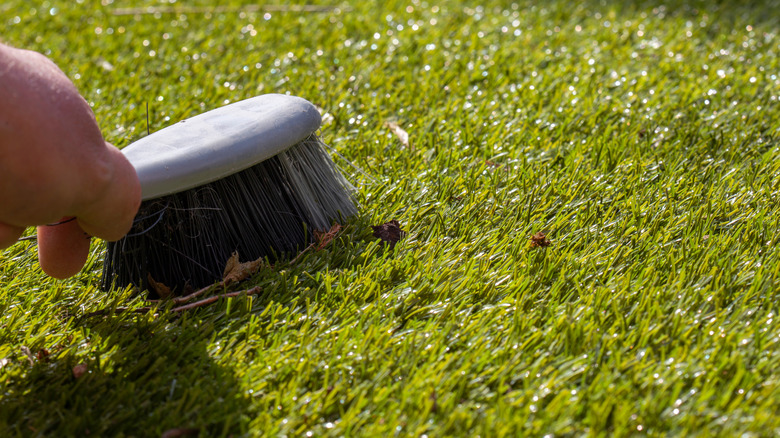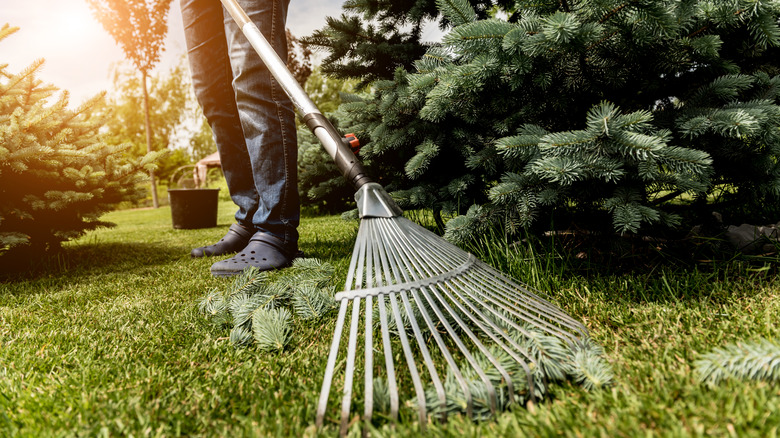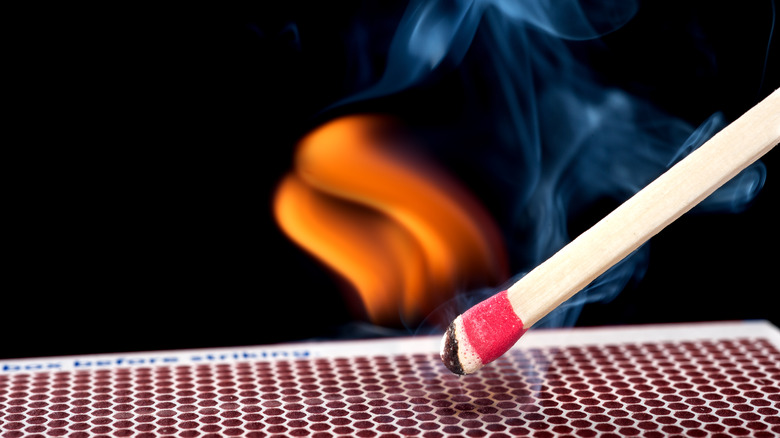Tips From Landscapers On Using Artificial Grass
Artificial grass isn't just for soccer fields and golf courses — it's also an excellent alternative to natural grass in a yard. There are tons of reasons to use artificial grass in your own backyard; the most important being that it makes caring for your yard, and therefore your life, a lot easier. Take a look at your backyard or courtyard. If those areas don't receive much sunlight, you're probably a good candidate for artificial grass. Real grass doesn't do well in shaded areas, which means you'll end up spending more time and money trying to keep it alive, according to Super-Sod.
You should also consider artificial grass if you're looking for a low-maintenance yard since it doesn't require watering. Heavenly Greens does suggest occasionally using water on your artificial grass in order to rinse it clean. But since it can't die, you won't to have to plan a funeral for your lawn even if it never sees the hose.
Wash with detergent
Synthetic turf is essentially an outdoor carpet, and just like carpet, you need to act fast when dealing with stains. The longer you let it sit, the more difficult it becomes to remove, says Artificial Grass Liquidators. Should a spill or other mess occur, wipe your artificial grass with a towel or use kitty litter to absorb the liquid, then rinse with a mixture of a mild detergent and water. Finally, using cold water, rinse the mixture out of the turf until there are no more suds.
Brush to refluff
Just like natural grass, artificial grass fibers stand upright to give it that natural-looking appearance. To prevent ruining the illusion of real grass, there are measures you can take to avoid flattening the fibers. Purchase Green advises against placing heavy furniture or inflatable swimming pools on the artificial grass. Areas with heavy traffic are also susceptible to flattened fibers. Should your artificial grass be flattened, you can simply brush or rake the fibers to make them upright and fluffy again.
Remove leaves and debris
No matter if you have artificial grass or the real thing, we can all agree that a lawn riddled with leaves affects the aesthetic of your home. In order to keep your lawn leaf-free, use a rake made with bamboo or plastic tines, as metal rakes with metal tines are more likely to damage your artificial grass, says US Green Tech. If you really want to prevent damage, use a broom or a leaf blower to remove the leaves instead.
Avoid heat
Avoid placing BBQ grills, fire pits, or other heated equipment on your artificial grass. Heat sources like these can torch the blades and leave burn marks behind, Lazy Lawn says. Additionally, some lawn care professionals use motorized tools, such as weed eaters, to tend to other parts of the lawn, which can also cause heat damage. Unfortunately, this type of damage isn't covered by most warranties, so make sure you're cautious of what you're using around your artificial grass.
